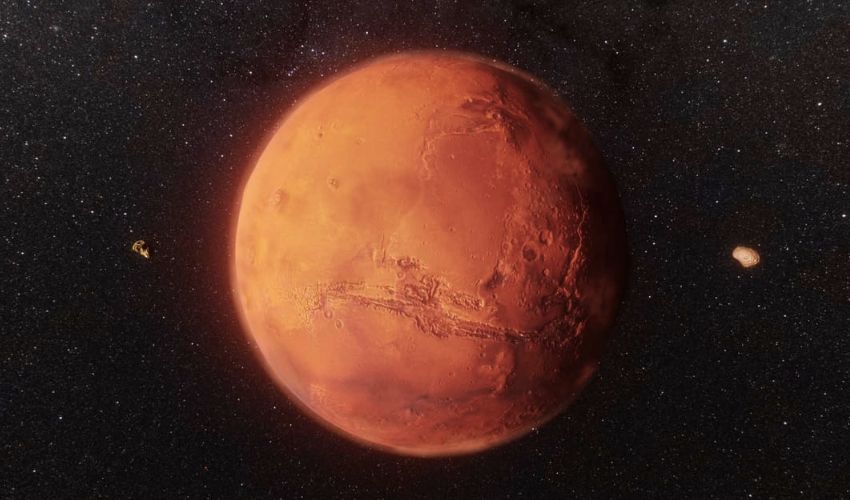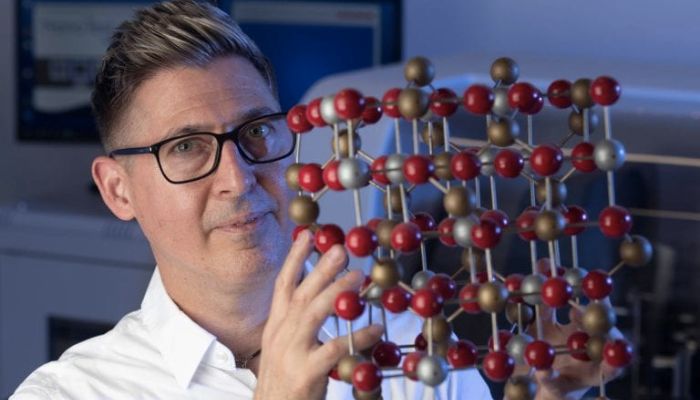Bacteria Could Play a Role in 3D Printed Construction on Mars

As NASA puts it, “no other planet has captured our collective imagination quite like Mars.” In recent years focus has turned from travel to the Moon to the space race to Mars. The more ambitious among us aims to colonize the Red Planet, and in order to do that we need habitable constructions. With this in mind, researchers at the University of California, Irvine, have studied the biochemical process which cyanobacteria undergo in order to absorb nutrients from rocks in Chile’s Atacama Desert. They found that these bacteria can alter the properties of the rocks, and believe that this could be applied for 3D printed construction in similarly hostile environments- such as Mars.
The researchers conducted experiments using high-resolution electron microscopy and advanced spectroscopic imaging techniques to see how microorganisms can modify natural minerals and synthetic nanoceramics. They found that the cyanobacteria produce biofilms which can change the properties of naturally occurring materials: they can dissolve magnetic iron oxide particles within gypsum rocks, subsequently transforming the magnetite into oxidized hematite. They do this to produce the minerals they need for photosynthesis to survive. When the researchers found this, they wondered if these natural processes could be manipulated to the benefit of human survival in inhospitable environments.

David Kisailus, UCI professor of materials science and engineering. (Photo credit: Steve Zylius / UCI)
What Could This Mean?
As the experiment showed that cyanobacteria can be used to modify the properties of both naturally occurring and artificial materials, the researchers are hopeful that the natural processes of microorganisms could be harnessed for the production of large-scale additive manufacturing in hostile environments, like on Mars. David Kisailus, UCI professor of materials science and engineering, explained the importance thus: “I call it ‘lunar forming’ instead of terraforming. If you want to build something on the moon, instead of going through the expense of having people do it, we could have robotic systems 3D-print media and then have the microbes reconfigure it into something of value. This could be done without endangering human lives.” He further expanded ‘“This is the main theme of my Biomimetics and Nanostructured Materials Lab. Why try to reinvent the wheel when nature’s perfected it over hundreds of millions of years? We just have to extract the secrets and blueprints for what nature does and apply or adapt them to what we need.”
This is not the first example of 3D printing being considered for buildings off Earth. Just this year, ICON has been granted $57.2 million in funding by NASA to research the possibility of habitable constructions with adequate thermal, radiation and micrometeorite protection. As research shifts towards long-term human presence on the Moon and long-distance travel to Mars, it is likely that 3D printing will continue to play a role in these projects. To find out more about this experiment, you can click HERE for the scientific paper.
In another example of extraterrestrial habitations, ICON has been offered funding by NASA to produce 3D printed lunar constructions (Photo credit: ICON)
What do you think of this project, which could be used for 3D printing on Mars? Let us know in a comment below or on our Linkedin, Facebook, and Twitter pages! Don’t forget to sign up for our free weekly Newsletter here, the latest 3D printing news straight to your inbox! You can also find all our videos on our YouTube channel.
•Cover photo credits: Vito Technology, Inc






